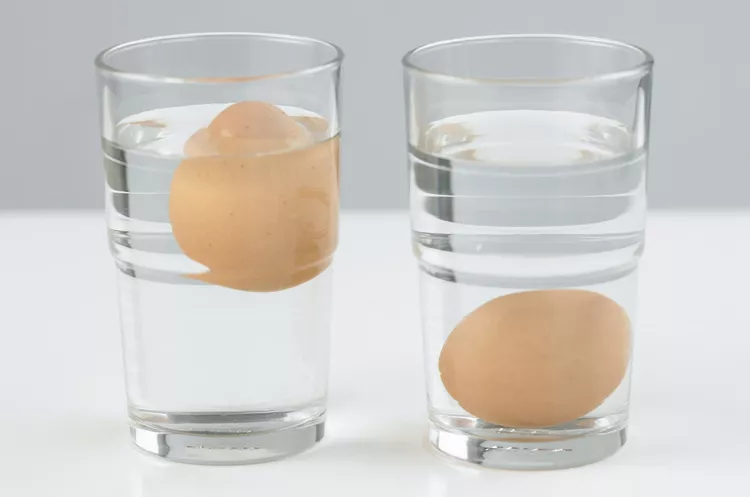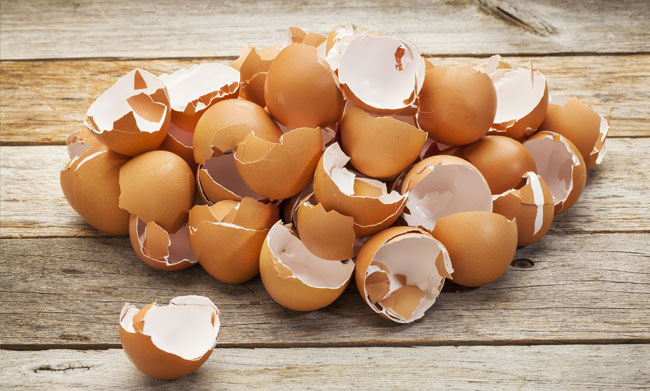Ever found yourself staring at a carton of eggs in the fridge, unsure whether they’re still fresh enough to use? It’s a common dilemma, especially when the eggs have gone past their sell-by date. While it may seem like those eggs should be tossed, they could still be perfectly fine. The printed date on the packaging isn’t always the definitive expiration marker.
Before you waste a perfectly good carton of eggs, let’s dive into five easy methods to check whether your eggs are still safe to eat. The best part? No boiling is required for these quick tests!
1. See If the Egg Floats

One of the easiest ways to check an egg’s freshness is to perform the float test. Here’s how it works: Fill a glass or bowl with cold water and gently place the egg inside. If the egg sinks and lays flat at the bottom, it’s still fresh.
If the egg sinks but stands upright on one end, it’s still good but nearing the end of its freshness. On the other hand, if the egg floats to the surface, it’s likely spoiled, and you should discard it.
Why Do Eggs Float?
Eggshells are semipermeable, meaning air can pass through them. As eggs age, more air enters through the shell, creating a larger air pocket inside. The larger the air pocket, the more buoyant the egg becomes. A floating egg is a clear sign that it’s old and should not be eaten.
2. Shake the Egg
Another simple way to test an egg’s freshness is to give it a shake. Hold the egg up to your ear and gently shake it. If you hear a sloshing sound inside, the egg is probably old, as this noise usually indicates a watery yolk.
If the egg doesn’t make any noise, it’s still fresh. However, the shake test is less reliable than the float test, so you may want to combine it with other methods before deciding whether to use the egg.
3. Sniff the Egg
A tried-and-true method for checking an egg’s condition is the smell test. Crack the egg open and give it a sniff. Fresh eggs have little to no smell, but if the egg smells sulfuric or unpleasant, it’s a sign it has gone bad and should be thrown out immediately.
What About Salmonella?
It’s important to note that you can’t always detect foodborne illnesses like Salmonella by sight, smell, or taste. That’s why the CDC recommends cooking eggs thoroughly until both the whites and yolks are firm, reducing the risk of bacterial contamination.
4. Inspect the Shell

Take a good look at the shell. A healthy egg should have a smooth, clean, and unbroken shell. If you notice cracks, sliminess, or powdery spots on the shell, it could indicate that the egg has been contaminated by bacteria or mold.
However, if an egg cracked on the way home from the store and you’re certain it was fresh, you can still use it immediately. According to the USDA, cracked eggs should either be used right away or broken into a container, sealed, and refrigerated for up to two days.
5. Crack the Egg for a Closer Look
Sometimes, the best way to determine an egg’s freshness is to crack it open and inspect it. Look closely at the yolk and the egg white:
- A fresh egg will have a firm yolk that stands tall and a thick, slightly cloudy white that stays close to the yolk.
- If the yolk flattens out and the white becomes runny, the egg is older but may still be usable, especially in baking or cooking.
- If you notice a discolored yolk or white, such as greenish, pink, or iridescent tones, it’s likely spoiled. Greenish egg whites are often caused by Pseudomonas bacteria, which are dangerous to consume. Any black or green spots are signs of fungal contamination and should prompt you to throw the egg away.
It’s worth noting that a small red blood spot on the yolk is perfectly harmless and doesn’t mean the egg is spoiled. It’s a common occurrence and safe to eat.
How To Use Less-Than-Fresh Eggs

If your eggs are nearing their expiration date but haven’t gone bad, there are still plenty of ways to use them. Hard-boiling the eggs is a great option, and once cooked, they can be transformed into delicious pickled eggs by placing them in a jar of brine.
Older eggs can also be perfect for making dishes where texture isn’t as important, such as scrambled eggs, egg bakes, or even deviled eggs. Using these eggs in baked goods like cakes, muffins, or pancakes is another fantastic way to ensure they don’t go to waste.
How To Store Eggs Properly
To make sure your eggs last as long as possible, it’s important to store them correctly. Eggs should be kept in the refrigerator, where they can stay fresh for three to five weeks after the sell-by date. Avoid storing eggs on the fridge door, as this area experiences temperature fluctuations. Instead, keep them on a shelf where the temperature is more stable.
Additionally, resist the temptation to wash eggs before storing them, as this removes their natural protective coating and allows bacteria to penetrate the shell more easily.
Conclusion: Keep Your Eggs Fresh and Safe
Don’t let uncertainty lead to wasted food. With these simple methods, you can easily determine whether your eggs are still good or if they’ve gone bad. From the float test to the smell test, you now have all the tools you need to ensure your eggs are fresh and safe to use in your favorite recipes.
So, the next time you find yourself questioning whether those eggs in the fridge are still edible, remember these five easy tricks. It might just save your meal—and your grocery budget!


